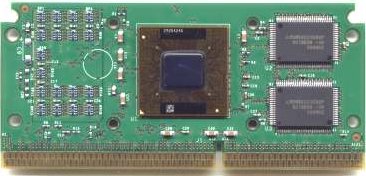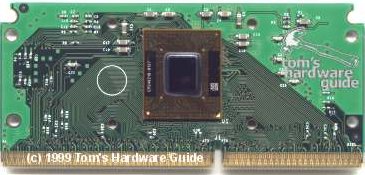Performance Guide: Intel Pentium III
Katmai Vs. Coppermine
The name Coppermine is a bit misleading, as copper-interconnects are not used in the manufacturing process of this chip. The following table will show you the most important facts about both cores:
| Header Cell - Column 0 | Katmai (Pentium III) | Coppermine (Pentium IIIE) |
|---|---|---|
| Clock Speeds at 100 MHz FSB | 450, 500, 550, 600 MHz | 550E, 600E, 650, 700, 750, 800, 850 MHz |
| Clock Speeds at 133 MHz FSB ("B") | 533B, 600B MHz | 533EB, 600EB, 667, 733, 800EB, 866, 1000 MHz |
| L2 Cache | 512 kByte | 256 kByte |
| L2 Cache Interface | 64 Bit | 256 Bit |
| L2 Clock Speed | Half CPU speed | Full CPU speed |
| L2 Associativity | 4-way set | 8-way set |
| CPU Voltage | 2.0V | 1.65V (1.7V at 1 GHz) |
A Pentium IIIE makes use of the Coppermine core while a Pentium IIIB is specified for 133 MHz system bus speed. Thus a Pentium III that uses the Katmai core and is designed for 100 MHZ FSB won't have any letter behind the number, and A Coppermine-core running at 133 MHz FSB is called 'EB'. However, since all Pentium III processors that are faster than 600 MHz are automatically using Coppermine-cores, Intel does not add the 'E' to them. Was that confusing enough?
On the right you can see the two cache chips of the "old" Pentium III.
Coppermine has the smallest die size of today's microprocessors, making a socket version possible again. The main reason for the socket rebirth is of course the price: the PCB for the cartridge (SECC2) version is not required any more, making the CPU a few bucks cheaper. Motherboards with a FCPGA socket are also cheaper to produce than Slot1-motherboard, thus reducing the systems costs even a bit more.
Get Tom's Hardware's best news and in-depth reviews, straight to your inbox.
Current page: Katmai Vs. Coppermine
Prev Page Introduction Next Page Katmai Vs. Coppermine, Continued
Patrick Schmid was the editor-in-chief for Tom's Hardware from 2005 to 2006. He wrote numerous articles on a wide range of hardware topics, including storage, CPUs, and system builds.

